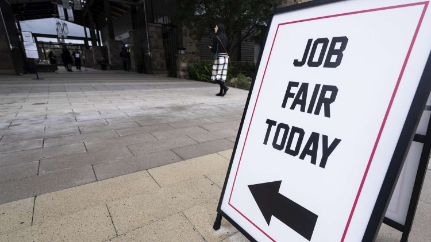
The July 2025 nonfarm payroll report showed employers added just 73,000 jobs, far below expectations and marking a significant slowdown. May and June job gains were also revised steeply downward—by a combined total of 258,000—revealing weak earlier momentum .
Glassdoor chief economist Daniel Zhao described the data as hitting "the eye of the hurricane": after warning signs, the deceleration is no longer approaching—it is here .
Economists cite multiple overlapping challenges:
Trade policy uncertainty and tariffs under President Trump have disrupted business planning and investment, slowing hiring in manufacturing and other sectors .
Tighter immigration rules, coupled with demographic shifts, are reducing labor supply and compounding hiring difficulties .
High interest rates and elevated borrowing costs, especially for small businesses, are constraining expansion and margin-sensitive hiring .
While sectors like healthcare and social assistance continue to add jobs, growth in consumer and business-driven industries—such as retail, logistics, manufacturing, and tech—is slowing or contracting TIME.
Career coaches warn:
“The job market is kind of trash right now… really difficult for people who have many years of experience… so it's going to be difficult for college kids.”
— Mandi Woodruff‑Santos
Moreover, while layoffs remain low, the quit rate and hires rate are falling—classic indicators of softening demand, suggesting workers are staying put amid uncertainty. Burning Glass Institute calls it “the Big Freeze”.
The slowdown raises pressure on the Federal Reserve to ease monetary policy: economists now assign over 80% odds to a rate cut at the Fed’s September meeting . Atlanta Fed President and others have signaled concern over the sharply weaker labor landscape .
President Trump’s dismissal of the BLS Commissioner following the revised jobs data sparked further alarm over politicization of economic statistics, though economists affirmed revisions are routine and not evidence of manipulation .
Recession odds have climbed to around 30–35%, with risk elevated by policy shifts, mounting trade disruptions, and hiring freezes .
Major business surveys highlight that firms are holding off on hiring or cutting headcount in response to uncertainty. The wave of government-backed hiring—particularly in social assistance—masks softer private-sector demand .
Economists like Samuel Tombs expect unemployment to rise toward 4.8% by year-end, driven by anticipated declines in small business hiring, federal employment cuts, and weakened consumer demand . If the job market continues to falter, rate cuts may become necessary to stimulate growth—but policymakers must balance that with managing inflation expectations and credibility.
In sum, the U.S. job market has moved from warning signs into its most turbulent phase yet—no longer a storm on the horizon but the eye of a labor hurricane.
Share This News